Remembering America's Forgotten Nuclear Cleanup Mission
For then 19-year-old Private Mark Sargent, it sounded like a pretty good gig, as far as army gigs went. Six months on a remote tropical atoll in the Pacific Ocean. No one shooting at you. Just some soil to move around a few islands.
“You can see the ocean on both sides from most of them and the water is warm with white beaches,” explained the pre-mission briefing handout Sargent received en route in Hawaii. “You’re probably [having] visions of a south sea island paradise with swaying palm trees, and to a certain extent that may be true.”
But the next bit of information was more ominous: “The majority of cleanup activities are conducted on islands free of radioactive debris. Any work on islands which have some residual radioactivity is being closely monitored and protective clothing is used.”
Not long after receiving that handout, Sargent was walking these white sand beaches in shorts, rubber boots and a painter’s mask, looking for bits of scrap metal that would eventually be buried in concrete inside a nuclear blast crater.
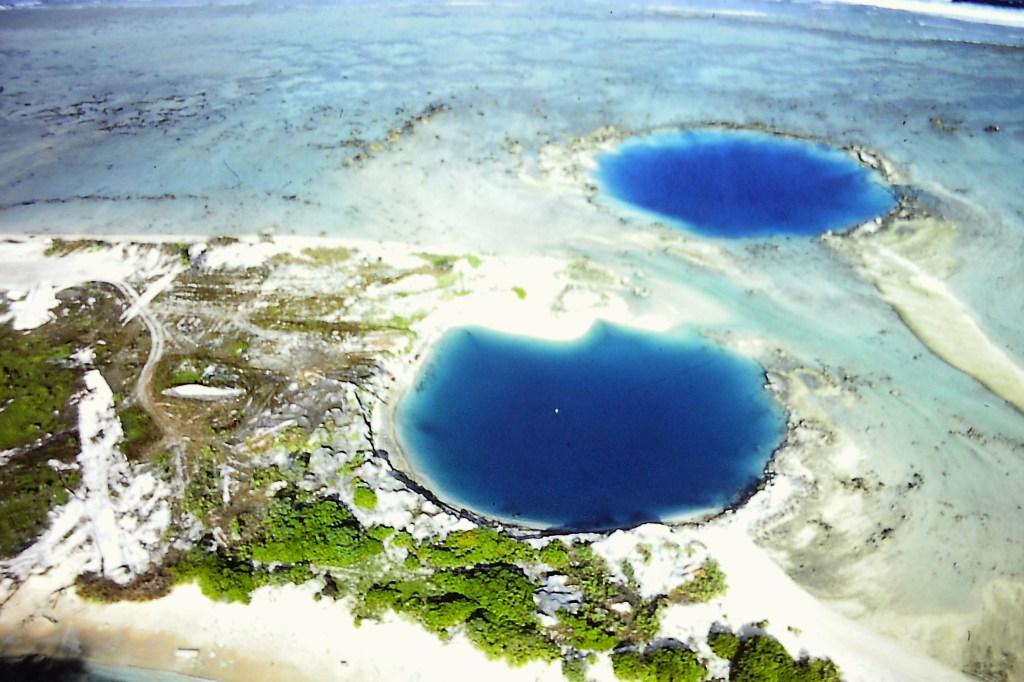
He was one of about 5,600 US military personnel sent to the Marshall Islands between 1977 and 1980 in an almost forgotten chapter of American nuclear history. Their job was to make the Enewetak Atoll fit for human habitation again after 43 nuclear weapons tests—which made up about 6 percent of all nuclear weapons tested worldwide—were detonated there between 1948 and 1958.
One of those tests, the first hydrogen bomb, was conducted on a nub of sand known as Elugelab Island, where today nothing remains but a seawater-filled crater. Another island further along the chain, Runit Island, survived the tests, but was rendered uninhabitable for thousands of years. It was here that 3.1 million cubic feet of radioactive sand and scrap metal was consolidated into a 370-foot wide crater known as “the cactus crater,” and sealed under a dome of concrete.
“We’d go along the beaches at low tide and pick up metal from the blown up ships, debris, ordinance, stuff from World War Two, rusted Japanese helmets, some unexploded ordinance which we’d sometimes blow in place,” Sargent recalls. “The geiger counter would go off like crazy. You know that sound it makes? It’s just, you know it’s bad. And this is with your bare hands.
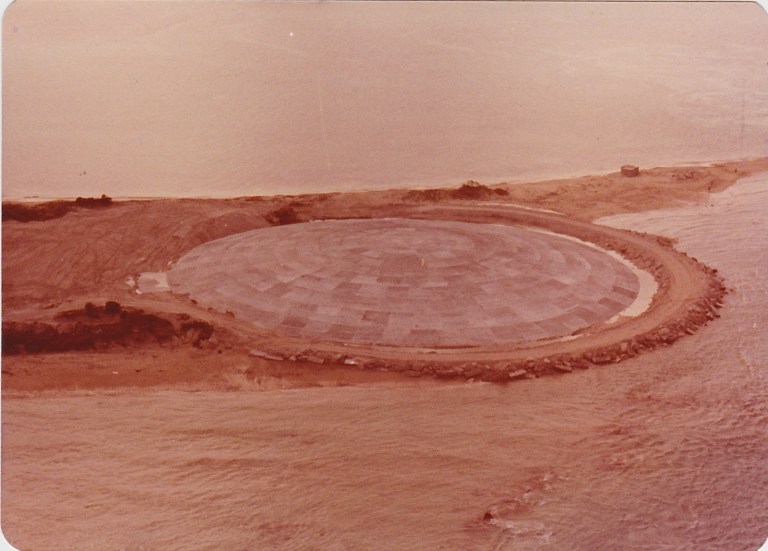
“I pretty much knew the whole time I was getting exposed to high doses of radiation.”
In the years since, the men involved in the cleanup have found themselves facing health problems similar to those experienced by the men who witnessed the tests. But unlike those crews, the Enewetak cleanup veterans haven’t received government support or even acknowledgment they were affected.
For years they’ve faced resistance from various defense agencies who claim they weren’t exposed to significant levels of radiation, and that “it would be difficult to identify additional radsafe precautions that could have been taken” during the mission. But the men who served on Enewetak tell a different story: one of improper or defective equipment, and of management who constantly underestimated the risks.
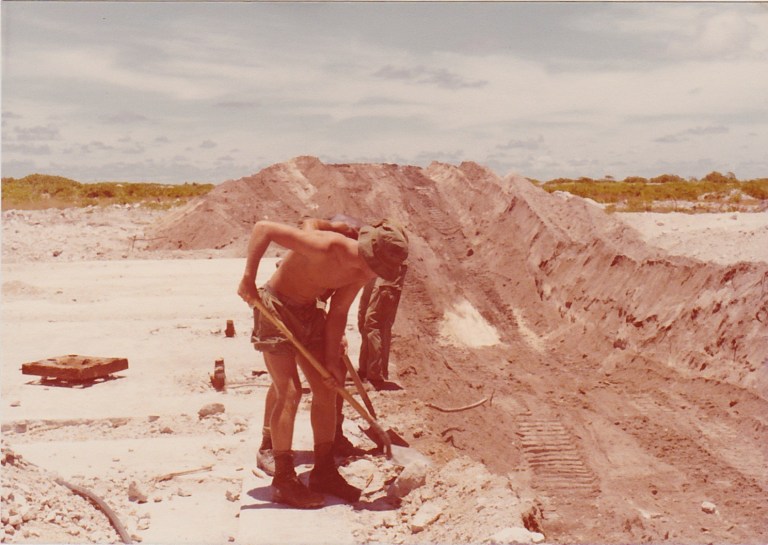
Sargent remembers his time on the Enewetak Atoll as isolated, labour-intensive and hot. He was three months out of basic training when he was flown in via Hawaii, landing on an airstrip that barely fit the length of Enewetak Island. It was two years into the mission, but beyond the briefing document he’d received in Hawaii, Sargent knew nothing about the mission, the atoll or what he was doing there.
“They said we’d get on a ‘need-to-know’ basis,” he recalls. “That’s what the army does; they don’t tell you nothing.”
Guys like him on the cleanup crew—known as Lowja Animals for the island they were based on and their minimal adherence to regular military dress—would be shipped across to one of the contaminated islands and work 10- to 12-hour days in the South Pacific sun, six days a week.
Sometimes they’d be digging up soil a few inches at a time until the geiger counters stopped clicking violently. Sometimes they’d be picking up scrap and spraying it red for “hot”. Some guys would be on heavy machinery duty, bulldozing here, digging there, trucking god-knows-what to be dumped in the cactus crater.
Whatever the task, the days were long, and at night they’d ship back to Lowja and do what young men do when they’re bored. Booze wasn’t hard to come by, and rat stomping parties down at the island dump always had plenty of participants. Saturday nights before their day off work invariably got a bit wild. Photos from the time show a place that almost looked like it could be fun. But beneath everything was a deep sense of unease.
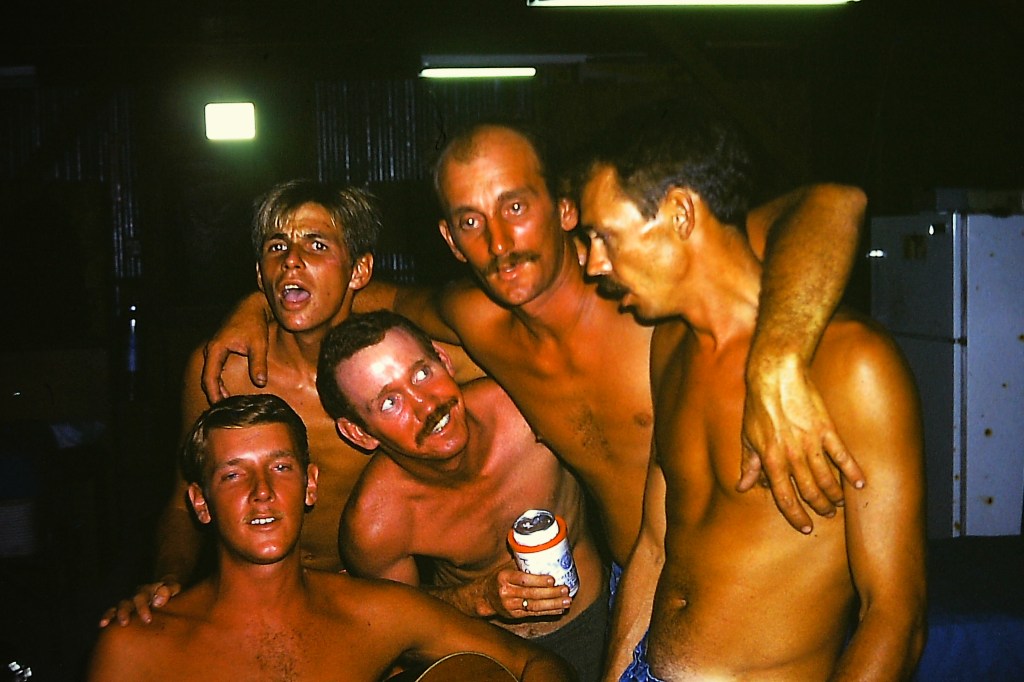
“You know what’s going on,” Sargent says. “I knew it was bad because the size of the craters from the bombs. We knew the radiation was bad… but what else are you going to do? You can’t go anywhere.”
Many of the men say they simply trusted their superiors who told them they were only being exposed to about an X-ray’s worth of radiation during their six month deployment.
“I did trust the superiors who said ‘yeah, you’re not going to be exposed to anything harmful. Don’t worry about it.’ I took them for their word,” says Girard Frank Bolton III, an army engineer draughtsman who served on Enewetak twice, in 1977 and then from ‘78 to ‘79.
“But quite a few of the other people who were there, they were freaking out. We had a lot of people asking ‘what about the masks? What about radiation protection?’”
Bolton says in the early days some men would train in yellow, full-body radiation suits with respirators, but they had to stop using them after it became apparent that heatstroke was a serious risk. “I’ve heard several people say that when you took the boots off you poured sweat out of the boots that had collected,” he says.
Instead, the radiation suits were apparently only brought out for photo shoots with the civilian or military press.
“Usually it was photo-op type situations,” he says. “Wear them, use the protective gear while the cameras were rolling or taking snapshots, but as soon as they were out of the way, it was back to normal again without any protection.”
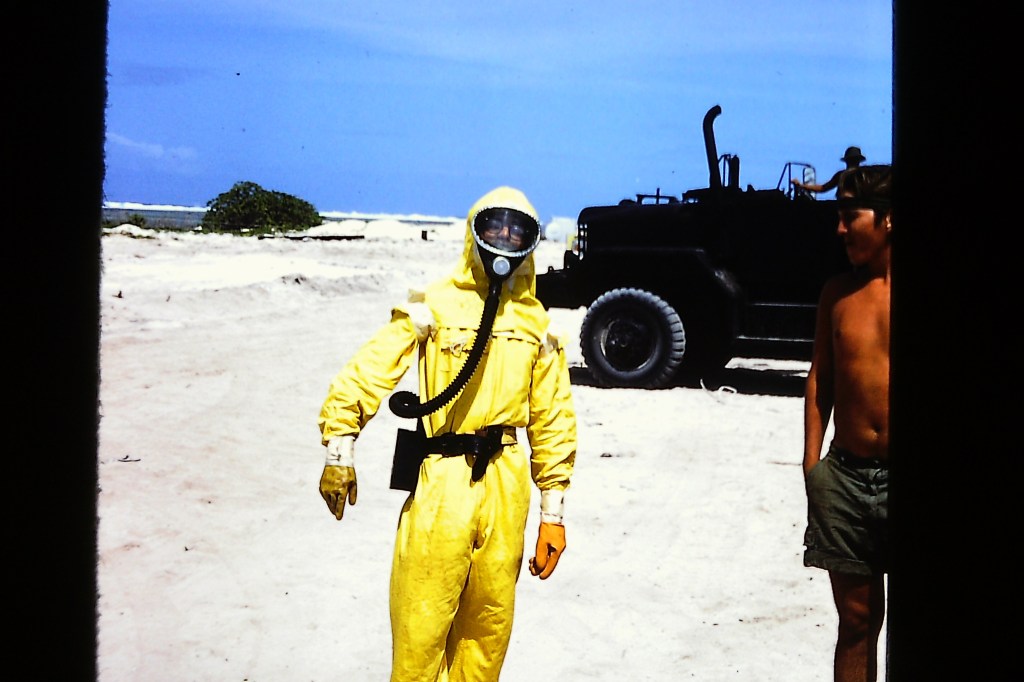
Most cleanup veterans say about all they had in the way of radiation protection while on Enewetak was rubber boots and paper painter’s masks, but even they were difficult to use in the conditions.
“You’d be wearing that mask, it’d be saturated with sweat and you’d have to breathe air somehow,” says Sargent. “You’d get little breaths now and then.”
Other precautions championed as good practice either didn’t work or didn’t happen, according to a number of vets. Safety gear broke down, was used incorrectly or simply wasn’t available. Radiation hotspots weren’t adequately policed. Men refused tests, or ate coconuts and seafood that had been contaminated with radiation.
“Really it was a joke,” Sargent says. “All the trucks would unload the contaminated soil through the [safe-unsafe] line and dump it into the crater, and the same trucks would go back. I’ve got pictures of the dust kicking up everywhere. The same boats that hauled the contaminated soil were the same boats that we rode in back and forth to work.”
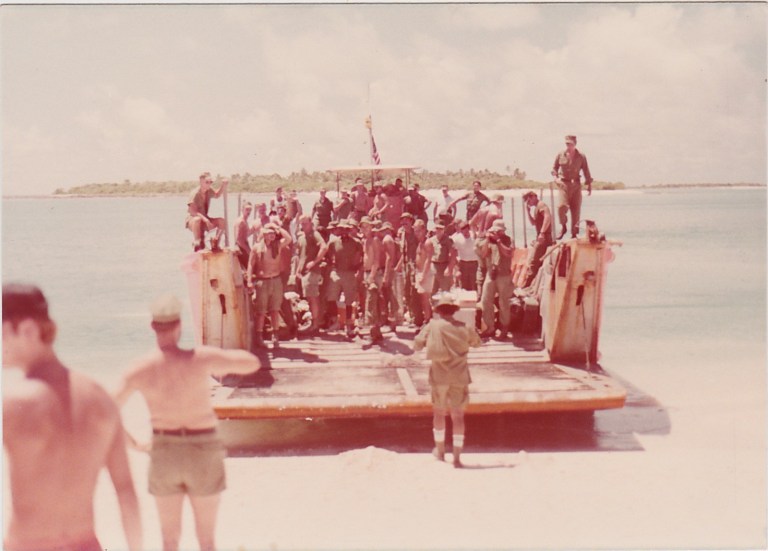
In the years since, the declassified mission documents unearthed by Enewetak veterans and the New York Times have backed up the veterans’ arguments that not all was as the military claimed. Personal radiation badges, designed to warn personnel if they’d been exposed to dangerous amounts of radiation, often failed in the first half of the mission, with one period from September 1978 to January 1979 recording a fail rate of 90-100 percent.
Air samplers that were supposed to monitor whether troops were inhaling particles of plutonium often broke down, with a Defense Nuclear Agency report from 1978 finding that only a third of samplers in the atoll were operational. Nasal swabs and urine tests for plutonium were taken, but the military said they had been lost in response to a New York Times freedom of information request.
Sargent says these inadequacies were recognised at the time, but there was little they could do. He remembers asking superiors how they could be fine if the geiger counters were clicking like crazy over material they were hauling by hand.
“They’d say ‘oh, it’s gamma rays, it won’t hurt you. It’ll go right through ya’. Honest, honest,” he says. “Yeah it’d piss you off. You’d want to get out of there as soon as you could. It pisses me off more now, finding out what more we were exposed to. It’s just unbelievable.”
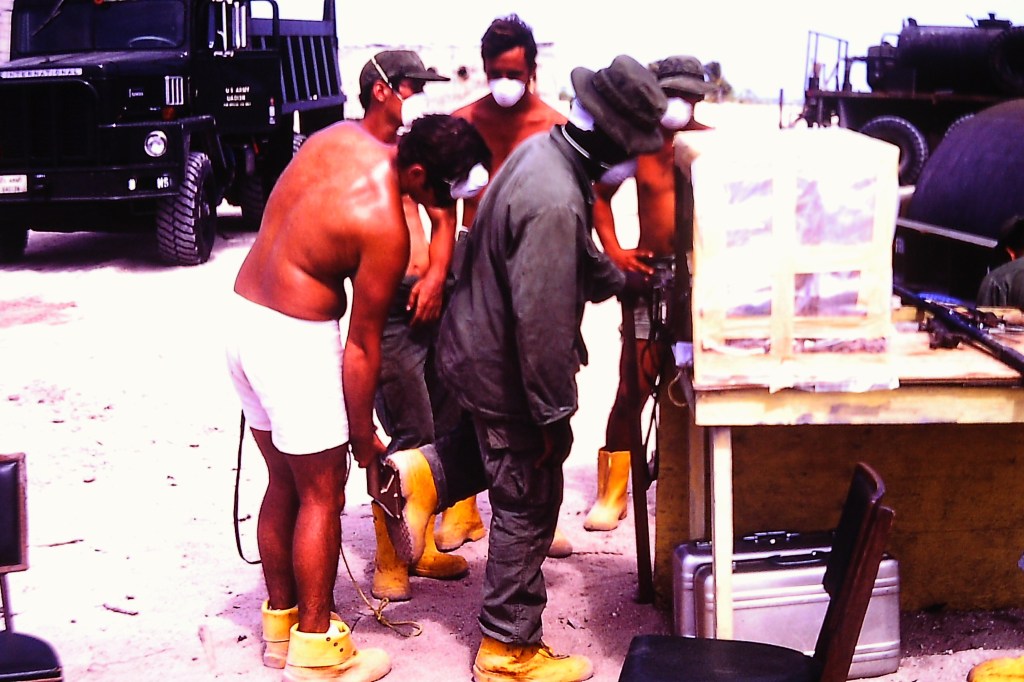
Both Sargent and Bolton eventually left the army, got civilian jobs and had families. For decades their mission on Enewetak was just one small adventure amid a growing lifetime of experiences. Then about five years ago a buddy shared a newspaper article with Sargent about another Enewetak vet who had a place near Sargent’s home in Maine. Paul Laird had at this stage been diagnosed with several forms of cancer which he believed came from his time on the atoll, and the article spoke about his fight to have the government agree.
“When we met for the first time there was a special bond that you get when you meet someone that served there, even though we didn’t serve together,” Sargent says. “He had been fighting our politicians for recognition for a while and I was more than happy to help him.”
Sargent began campaigning with Laird in DC about four years ago, but the cancers were beginning to take their toll on Laird. He’d first been diagnosed with kidney cancer in 2009, then bladder cancer which came back several times in two different forms. He was diagnosed with esophageal cancer in 2018, which killed him in March 2019.
“He was a real hero to us,” Sargent says. “He had six different cancers. The seventh finally killed him.”
Laird wasn’t the only one. Since beginning to reconnect in 2012 via Facebook and the website AtomicCleanupVets.com, the veterans of the cleanup realized many were suffering similar health issues, which they attributed to their service on the Enewetak Atoll.
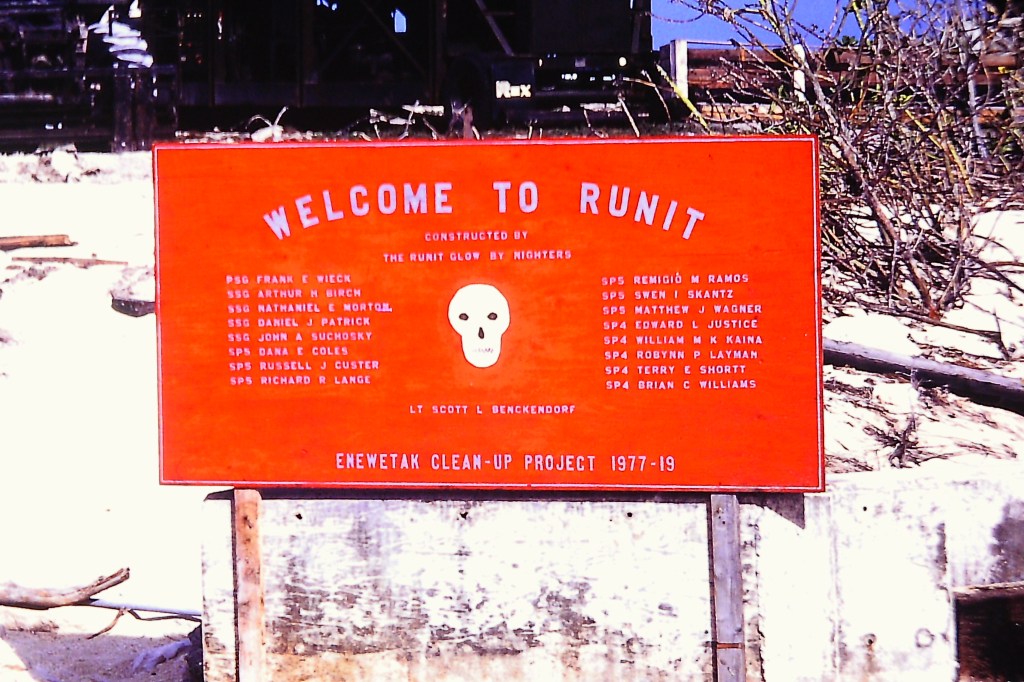
While there has never been a formal health study, around 400 veterans responded to a survey in which 20 percent who had served on the northern islands reported various cancers. Just over a third of other respondents list problems like infertility, brittle bones and thyroid issues, although the effects of radiation exposure are notoriously difficult to quantify.
What is clear is that many men in their late 50s and early 60s are now sick in some way.
“It was interesting when we started comparing our health issues… because everything was so common. Breathing issues, lung issues—I’ve heard heart problems, different types of cancers,” says Bolton. “I believe it was just under 300 different types of health issues.”
In the last few months two veterans have died, he says, and a further six died in the previous year. Bolton says they know of at least 50 men who have died since the mission ended.
“And that’s just from the men we’ve reconnected with,” he says.
“At first we were finding survivors from the islands, but now we’re finding mostly children or widows,” says Sargent. “We’re not finding a lot of us any more.”
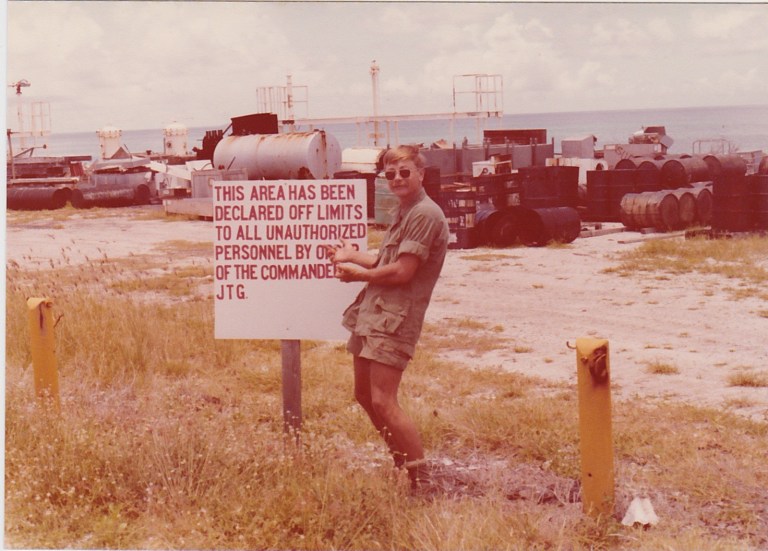
Those who are left have been campaigning for years to get the Atomic Veterans Healthcare Parity Act passed, which would see the Department of Veterans Affairs treat the Enewetak cleanup veterans the same as veterans who had been exposed to radiation during the testing era. Specified cancers and other diseases would be presumed to be connected to their service on the atoll, which in turn would allow them access to healthcare benefits and disability compensation.
While the bill has had broad support in congress, at one stage having over 250 co-sponsors, it’s died in subcommittees several times before ever reaching the floor.
“During the Obama Administration we got the closest to getting it presented in the house,” Bolton says. “It never could get on the floor, even though we had the majority co-signers. I believe this is now the fourth attempt we’ve made to try and get it passed into law.
“All this delay, delay, delay until [we] die is pretty much the feeling of quite a few of our group members.”
Bolton says they’re hoping to have it resubmitted again in early 2021. All the while, claims made by the men for assistance from VA are denied based on the official line that they were not exposed to significant amounts of radiation.
When contacted by VICE World News for comment, the Defense Threat Reduction Agency, which was the organisation born out of several predecessor agencies responsible for the cleanup, still maintains that people serving on the islands weren’t exposed to dangerous levels of radiation.
“The Enewetak Atoll Cleanup (ECUP) participants conducted all cleanup work (1977-1980) within a structured and effective radiation protection program, which served to minimize radiation doses,” reads the reply. “The highest of the estimated upper-bound total effective radiation doses for any of the included sample assessments is 0.22 rem (2.2 mSv) above natural background. This dose is similar to the average individual effective dose of 0.31 rem (3.1 mSv) to the U.S. population from ubiquitous background radiation including radon.”
However, veterans like Sargent and Bolton say this assessment misses the point, as their lived-in experiences are being ignored.
“Our government can spend millions of dollars testing this stuff but they can’t spend a few million taking care of the people who cleaned it up?” Sargent says. “It’s just so wrong.”
“When we joined the military and went to the atoll, we were told we’d be taken care of,” Bolton says. “We consider ourselves forgotten. It was a forgotten mission by forgotten people.”
Follow Chris on Twitter
DMT.NEWS
via https://www.DMT.NEWS
Chris Shearer, Khareem Sudlow
